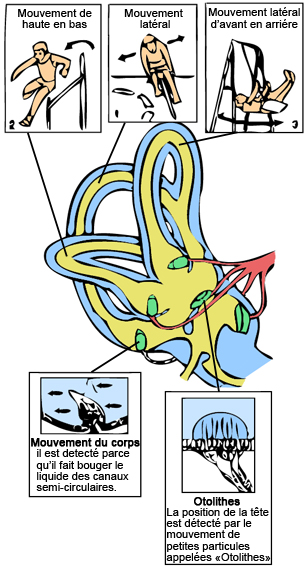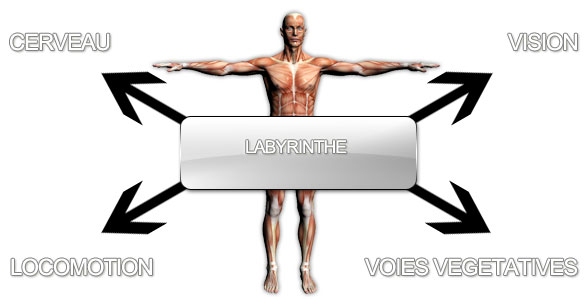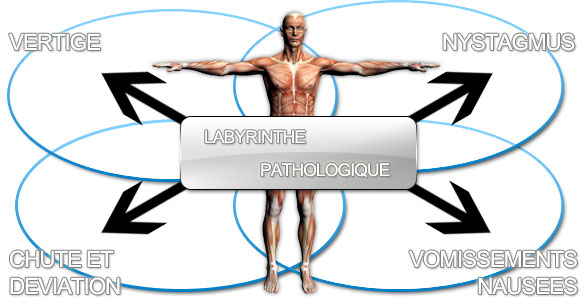Vestibular Physiology
Equilibration: a subconscious phenomenon under normal conditions
Under normal conditions, equilibration occurs subconsciously, but when the stimulations become too strong and, generally speaking, when the centres believe the information received to be disjointed, an error signal appears at the cortical level, and there is a conscious awareness of balance, which manifest itself as an unpleasant feeling.
These might stem from a number of situations:
- lesion of a peripheral sensory organ;
- contradiction between visual and vestibular information;
- information previously unknown;
- an integration failure of the centres.
The vestibule at the heart of the balance system
The vestibular apparatus is constantly involved in the adaptation reactions, both static and kinetic. Stimulated by the acceleration caused by head movements, it allows one to instantly stabilise the gaze.
Balance comprises a physiological process, with a number of different components: liquids (perilymph and endolymph), mechanoreceptors (the utricular and saccular maculae and the ampullary crest of the semi-circular canals) comprising the receiver cells (hair cells) and a messenger (hair cells neurotransmitter).
Physiology of the mechanoreceptors

The semi-circular canals: measuring rotational acceleration
Each of the semi-circular canals (horizontal, anterior vertical and posterior vertical), along the three planes, comprise the structure of the receptors: the ampullary crest which contains the sensory cell mounted on a transparent membrane, the cupula.
Movements of the endolymphatic liquid, stemming from angular acceleration, result in the deflection of the cupula and a distortion of cilia of the sensory cells, are the source of the stimulation and the nerve impulse. Depending on the plain of rotation of the head, one or a number of pairs of canals will be involved.
The crestas of the posterior vertical canals (1) will lean during lateral inclination of the head, whereas rotational head movements along the horizontal plain (up and down movement and forward and backward movements) will stimulate the cresta of the anterior canals (2-3).
During flexion and extension movements, only the upper canals are put into motion.
- The maculae: measuring linear acceleration
The utricular and saccular maculae are formed by the receptor cells whose cilia are covered by the otolithic membrane.
Linear acceleration of the head brings about a tangential movement of the otolithic membrane of the maculae with respect to the sensory epithelium (4). The deflected cilia stimulate the sensory cells and trigger a nerve impulse, which compensates for the modifications to the direction of the force of gravity.
Overall functioning and schematics
The arguments you are about to read are simplistic but have the advantage of providing useful indicators making it easier to understand the complex functioning of the equilibration organ.
If we first focus uniquely on the labyrinth, we see that it is connected by four main pathways:
- to the brain,
- to the eye,
- to the musculo-tendinous system,
- to the neurovegetative system.
We could then describe the following as the preferred pathways: vestibulo-cortical, vestibulo-ocular, vestibulo-spinal and the vestibulo-vegetative.

When the labyrinth is damaged, it provides its of its four correspondents with erroneous information, resulting in the syndromes observed during the clinic sessions:
- cortical information explains the VERTIGO,
- spinal information is responsible for the BODY DEFLECTION, occasionally resulting in a fall,
- ocular information leads to NYSTAGMUS,
- lastly, cross-referenced information manifests itself as vegetative signs, such as VOMITING, NAUSEA...

It has an impact on all of the pathways more or less and it is easy to understand that in clinical practices there are an infinite number of balance disorders that are associated, to varying degrees, with the four syndromes. From one extreme to the other, the “subconscious” nystagmus can be used to describe anything from a major vertigo episode with the patient bedridden, to vomiting.





